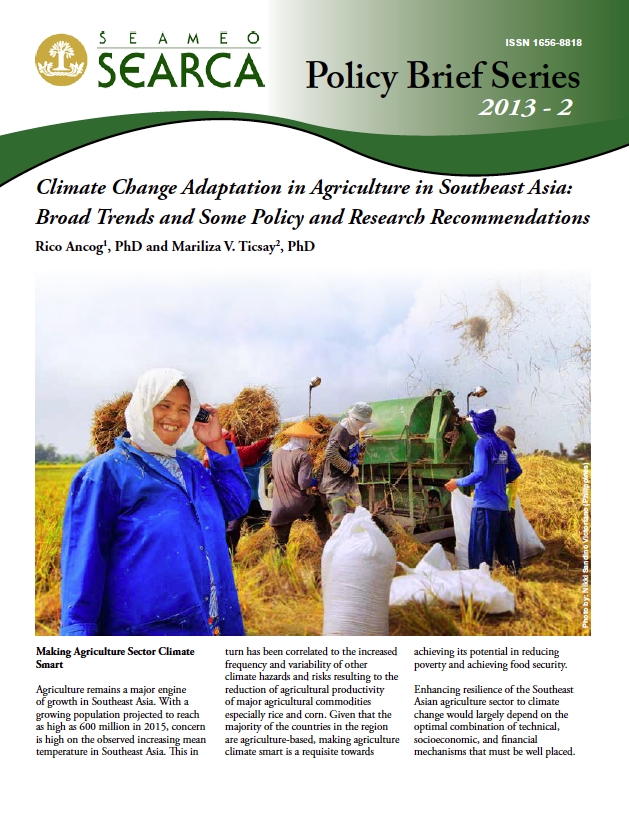Climate Change Adaptation in Agriculture in Southeast Asia: Broad Trends and Some Policy and Research Recommendations
Making Agriculture Sector Climate Smart
Agriculture remains a major engine of growth in Southeast Asia. With a growing population projected to reach as high as 600 million in 2015, concern is high on the observed increasing mean temperature in Southeast Asia. This, in turn, has been correlated to the increased frequency and variability of other climate hazards and risks resulting to the reduction of agricultural productivity of major agricultural commodities especially rice and corn. Given that the majority of the countries in the region are agriculture-based, making agriculture climate-smart is a requisite towards achieving its potential in reducing poverty and achieving food security.
Enhancing resilience of the Southeast Asian agriculture sector to climate change would largely depend on the optimal combination of technical, socioeconomic, and financial mechanisms that must be well placed.
Technical knowledge on how to utilize old, yet well-adapted management approaches for the Southeast Asian agricultural systems in response to climate change-related risks is necessary to be complemented with new ones that are responsive to the socioeconomic status of the target farmer-beneficiaries. Governments need to invest in socioeconomic and financial mechanisms that must support climate change adaptation in agriculture. All of these concerns need to be mainstreamed in the climate change policy architecture in Southeast Asia.














